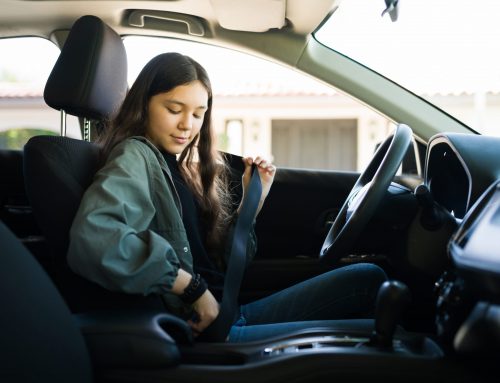Has a brand spanking new set of wheels caught your eye, but you still have outstanding payments on your current motor? It may be possible to trade in your car on finance to help you buy a new one. In this guide, we will explain whether you can part-exchange a car that is on finance, the process involved, and what you need to know and provide to make it possible.
What Is a Part Exchange?
Part exchange refers to using the value of your old vehicle as part of the payment for your new one. Most providers will offer this as a service, and it can often be easier and more convenient than selling your car privately.
If you outright own your car, the full value of the part exchange can go into financing your new set of wheels. However, if you still owe finance on your car, the value of the part exchange will go towards paying off your settlement figure – let’s take a look at part exchanging a financed car…
Can You Part Exchange a Car on Finance?
Yes, you can! Most providers will have a system set up for this if you haven’t finished your finance plan, whether that be a Personal Contract Purchase (PCP) or Hire Purchase (HP) or Conditional Sale (CS).
Here, we’ll explain how it works and the key things to consider.
How Does Part Exchanging a Finance Car Work?
Because you don’t fully own the vehicle, it may seem complicated to part exchange a car with finance attached, however, it’s actually quite simple and your provider will be able to assist you the entire way.
Firstly, you will let your provider know that you are interested in trading in your old motor, and they should be able to tell you what your finance options are.
Your provider may then give you a settlement figure. This figure is the amount that must be paid to clear the loan in full, which typically includes:
- The remaining scheduled payments
- Any interest
- Any potential admin fees
If you’re under an HP or CS agreement, you may be able to give the car back to the provider if you have paid 50% of the total amount repayable under the agreement and end the agreement. This is known as Voluntary Termination (often shortened to VT).
Once you’re sure of your settlement figure, you can then get a valuation of your current car from the provider you’re looking to trade in with. This valuation will give you a basis on whether you will be in positive or negative equity going into your next finance plan.
We hope this overview of the part exchanging process is helpful. Please feel welcome to contact our friendly experts at Ucan for tailored advice on what finance you could get access to or read on to learn more.
Positive Equity Vs Negative Equity
Your new finance plan will hinge on whether you’re in positive or negative equity following your valuation.
If your current car is valued higher than the amount you have remaining to pay off in your finance agreement, you are in positive equity. You can then put the remaining capital towards buying your new car.
However, if your car is valued at less than your settlement figure, you are in negative equity. You still may be able to trade in your current car if you’re in negative equity, however, the amount you owe may be added on to your new finance plan. For example, if your settlement figure is £3,000 and your car is valued at £2,500, you will owe £500 to your provider. Your new provider may choose to loan you the £500 and this will be added to your new agreement.
Tips for Keeping Your Car Equity Positive
Naturally, it’s better to have positive equity on your vehicle at the point of trade in. Here are some simple tips you can keep in mind to help make this happen:
- Service your car properly. Long-term faults could lead to the depreciation of core parts of your vehicle, such as the engine, which will reduce its overall value.
- Use your vehicle sensibly! Overusing it on unnecessary trips, whether that means frequent trips to the shop, or occasional ultra long-distance trips that would be better suited to public transport, will inevitably rack up the miles you travel, so try to keep this in check where possible.
What Documents Will I Need for a Car Finance Trade In
When you’ve found the perfect deal and you’re ready to part exchange your vehicle, you will need a couple of documents to make sure the process is as smooth as possible.
You will need to include your V5C, commonly known as a logbook. This document registers your car with the Driver and Vehicle Licensing Agency (DVLA) and contains your vehicle’s information, such as:
- Who the registered keeper is
- The date it was first registered
- The manufacturer
- The engine size
- The colour
You will also need to provide:
- The manual for the car
- Service documents
- Any MOT paperwork
- Spare set of keys
And most importantly you will need to give them a copy of your Settlement Letter from your existing provider so they can arrange to pay this off for you.
Providing all of the above will make the process much easier and ensure your car is valued correctly.
Ucan Part Exchange Today
Ready to trade in? Let Ucan help you and apply for finance today! The application is easy and takes 30 seconds to get a simple quote.







Leave A Comment